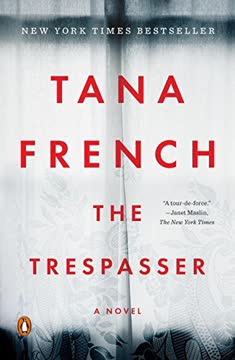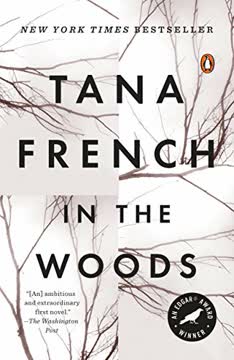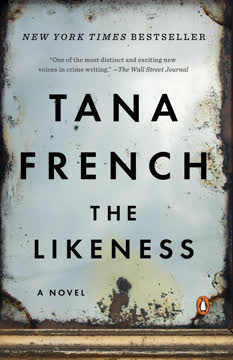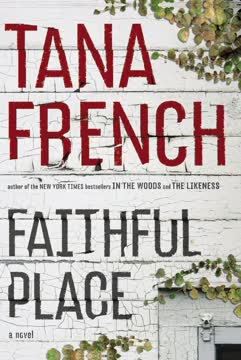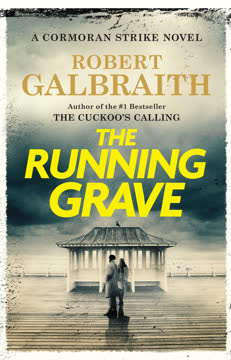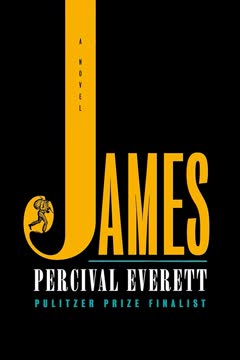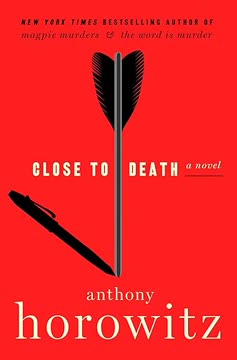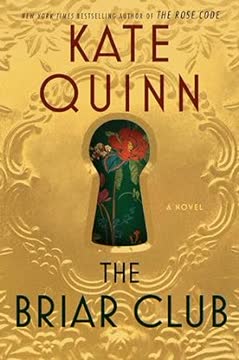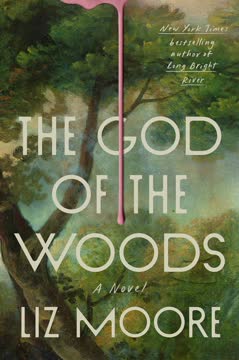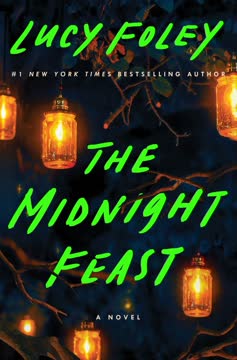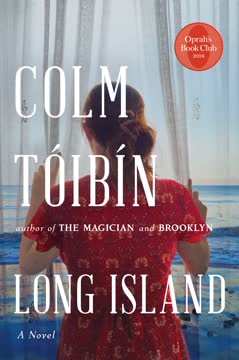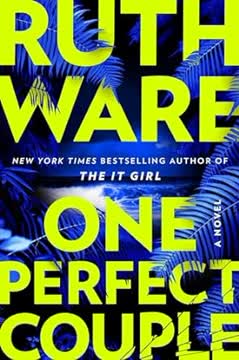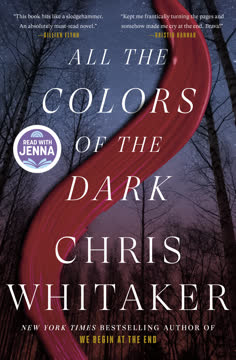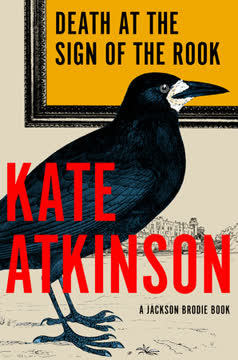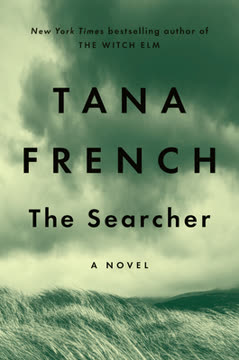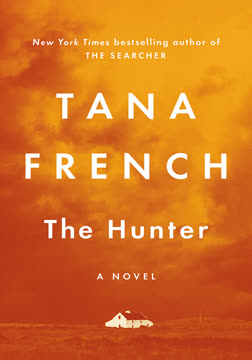Plot Summary
Mysterious Past and Present Tensions
Antoinette Conway's journey as a detective is deeply influenced by her childhood, marked by her mother's fantastical tales about her absent father. These stories, once a source of wonder, later revealed a painful reality, fueling Antoinette's determination to seek truth and independence. Her past, a tapestry of half-truths and resilience, sets the stage for her current struggles within the Dublin Murder Squad, where she faces skepticism and hostility. This backdrop of personal history and professional challenges shapes her relentless pursuit of justice.
A Case of Domestic Disturbance
Antoinette and her partner, Steve Moran, are thrust into a murder investigation involving Aislinn Murray, found dead in her home. The scene suggests a domestic dispute, with Aislinn's head injury pointing to a violent altercation. As they navigate the frustrating aspects of the job, dealing with uncooperative witnesses and bureaucratic hurdles, Antoinette's instincts tell her there's more beneath the surface. The case, seemingly straightforward, becomes a complex puzzle, challenging the detectives to look beyond appearances.
Rory Fallon: The Prime Suspect
Rory Fallon, Aislinn's boyfriend, quickly becomes the prime suspect. His account of the evening is riddled with inconsistencies, and his nervous demeanor raises red flags. Antoinette and Steve interrogate him, probing for cracks in his story. Despite Rory's evasive answers suggesting guilt, Antoinette remains cautious, aware that appearances can be deceiving. The detectives must balance pressure with the need for solid evidence, navigating the psychological complexities of the case.
Interrogation and Doubts Arise
Antoinette and Steve employ various interrogation techniques, trying to extract a confession from Rory. As the pressure mounts, Antoinette's doubts about Rory's guilt grow, fueled by her intuition and the lack of concrete evidence. The tension between her and Steve is palpable, as they grapple with the possibility of a deeper conspiracy involving Aislinn's secretive life. The investigation becomes a psychological chess game, testing their resolve and instincts.
Squad Dynamics and Hidden Agendas
The detectives face mounting pressure from their superiors to close the case quickly. Antoinette suspects ulterior motives within the squad, as her colleagues seem eager to pin the murder on Rory. The squad's dynamics are fraught with hidden agendas and power plays, complicating the investigation. Antoinette's determination to uncover the truth puts her at odds with her peers, intensifying her sense of isolation and challenging her to navigate the treacherous waters of squad politics.
Secrets, Lies, and Surveillance
As Antoinette delves deeper into Aislinn's life, she uncovers a web of secrets and lies. Aislinn's involvement with a potentially dangerous crowd suggests a motive beyond a simple lovers' quarrel. Surveillance footage and digital footprints reveal a more complex narrative, challenging the initial assumptions about the case. Antoinette's pursuit of justice becomes a race against time, as she navigates the murky waters of deception and betrayal, piecing together the puzzle of Aislinn's life.
Breslin's Hidden Agendas Unveiled
Antoinette navigates the treacherous waters of the Dublin Murder Squad, where Detective Breslin's charm masks ulterior motives. Breslin attempts to manipulate Antoinette, offering her a chance to align with him against the squad's hostility. He reveals a fabricated story about her past, designed to isolate her. Antoinette, however, sees through his ploy, recognizing his desire to control her narrative. Despite Breslin's attempts to sway her, Antoinette remains resolute, determined to solve the case on her terms.
Rory's Stalking and Deception
Rory Fallon, initially portrayed as a nervous suspect, is revealed to have been stalking Aislinn Murray. Surveillance footage and inconsistencies in his alibi expose his deception. During an intense interrogation, Rory's facade crumbles as he admits to watching Aislinn from the shadows, driven by an obsessive infatuation. Despite his denials of murder, the evidence mounts against him. Rory's unraveling story highlights the dangerous intersection of fantasy and reality, complicating the investigation.
Confrontation with a Long-Lost Father
Antoinette's personal life collides with her professional one when a mysterious figure, resembling her, appears outside her home. This man, claiming to be her long-lost father, disrupts her world with his sudden presence. Their tense confrontation reveals his attempts to reconnect after years of absence, driven by personal loss and a desire for redemption. Antoinette, however, remains guarded, refusing to let him rewrite her story. This encounter forces her to confront her past and the narratives she has built around her identity.
Steve's Loyalty and Betrayal
Antoinette's partnership with Steve Moran faces a critical test as suspicions arise about his loyalty. Steve's actions, initially supportive, are scrutinized for potential betrayal. Antoinette grapples with the possibility that Steve's motivations may not align with hers, questioning whether his allegiance lies with the squad or with her. Their relationship, once a source of strength, becomes fraught with tension as Antoinette navigates the complexities of trust and betrayal within the squad's charged environment.
Aislinn's Fantasies and Realities
Aislinn Murray's life, marked by a blend of fantasy and reality, becomes central to the investigation. Her penchant for daydreaming and creating narratives around herself is explored, revealing a woman caught between her desires and the harsh truths of her existence. Aislinn's interactions with Rory and others are dissected, uncovering the ways in which her fantasies may have led to her tragic end. The detectives piece together her story, seeking to understand the motivations behind her actions and the events leading to her murder.
The Final Interrogation Showdown
The investigation reaches its climax as Antoinette and Breslin confront Rory with the evidence of his stalking and deception. In a high-stakes interrogation, they push Rory to confess, leveraging his inconsistencies and the mounting pressure. The tension culminates in a dramatic showdown, where Rory's defenses crumble, and he is forced to confront the reality of his actions. The resolution of the case brings closure to Aislinn's story, while Antoinette reflects on her future, contemplating her place within the squad and the narratives she chooses to embrace.
Confronting the Truth Unveiled
Antoinette Conway and Steve Moran piece together the evidence pointing to Detective McCann's involvement in Aislinn Murray's murder. They realize McCann had a secret relationship with Aislinn, which he tried to keep hidden. The detectives confront McCann, who initially denies any wrongdoing. However, the mounting evidence and their relentless questioning force him to admit to being at Aislinn's house the night she died. McCann's confession reveals a tragic misunderstanding and a moment of lost control, leading to Aislinn's death.
The Squad's Internal Struggles
The revelation of McCann's involvement in the murder sends shockwaves through the squad. Antoinette and Steve face backlash from their colleagues, who are divided over the implications of McCann's actions. The squad's dynamics are strained as loyalties are tested, and the pressure to maintain the squad's integrity mounts. Antoinette, already isolated within the team, finds herself at the center of the controversy, struggling to navigate the complex web of relationships and power plays.
A New Beginning for Antoinette
Despite the challenges and isolation she faced, Antoinette emerges from the investigation with renewed determination. Her commitment to justice and her ability to navigate the squad's complex dynamics earn her respect from some of her colleagues. As the dust settles, Antoinette contemplates her future within the Dublin Murder Squad, resolved to continue her pursuit of truth and integrity. The case has changed her, but it has also solidified her place within the team, setting the stage for new beginnings.
Characters
Antoinette Conway
Antoinette is a determined and independent detective who faces hostility within the Dublin Murder Squad. Her past experiences have shaped her into a fiercely resilient individual, driven by a desire to uncover the truth. Throughout the investigation, Antoinette's instincts and perseverance lead her to unravel the complex web of deception surrounding Aislinn's murder. Despite the challenges, she remains committed to justice, ultimately finding a sense of belonging within the squad.
Steve Moran
Steve is Antoinette's partner, known for his perceptive nature and easygoing demeanor. He provides a stabilizing presence in the investigation, balancing Antoinette's intensity with his calm approach. Steve's loyalty to Antoinette and his dedication to uncovering the truth make him an invaluable ally. His ability to connect with witnesses and suspects alike helps the detectives navigate the complexities of the case.
Rory Fallon
Rory is Aislinn's boyfriend and the prime suspect in her murder. His nervous demeanor and evasive answers mask a deeper obsession with Aislinn, revealed through surveillance footage and inconsistencies in his alibi. Rory's unraveling story exposes the dangerous intersection of fantasy and reality, as his infatuation with Aislinn leads to tragic consequences. His character embodies the themes of obsession and the blurred lines between dreams and reality.
Aislinn Murray
Aislinn is the murder victim, whose life is marked by a blend of fantasy and reality. Her penchant for daydreaming and creating narratives around herself becomes central to the investigation. Aislinn's interactions with Rory and others reveal a woman caught between her desires and the harsh truths of her existence. Her story highlights the complexities of identity and the consequences of living in a world of dreams.
Don Breslin
Breslin is a senior detective in the squad, known for his charisma and manipulative tactics. His involvement in the case raises questions about his motives, as he attempts to control the narrative and influence Antoinette. Breslin's interactions with colleagues reveal a complex dynamic of power and control, as he navigates the squad's politics and pursues his own agenda.
Joseph McCann
McCann is a detective whose involvement in Aislinn's murder is revealed through the investigation. Initially denying any wrongdoing, McCann is forced to confront the truth as Antoinette and Steve uncover his secret relationship with Aislinn. His confession reveals a moment of lost control, leading to Aislinn's death. McCann's actions and the subsequent fallout highlight the internal struggles and moral dilemmas faced by the squad.
Antoinette's Father
Antoinette's father, a long-lost figure from her past, disrupts her world with his sudden appearance. His attempts to reconnect after years of absence are driven by personal loss and a desire for redemption. Their tense confrontation forces Antoinette to confront her past and the narratives she has built around her identity. His character embodies themes of family, identity, and the complexities of reconciliation.
Plot Devices
Interrogation Techniques
The detectives employ various interrogation techniques to extract information from suspects and witnesses. These methods involve psychological manipulation, pressure, and strategic questioning to uncover inconsistencies and hidden truths. The interrogation scenes highlight the complex dynamics between the detectives and their subjects, revealing the psychological toll of the investigation.
Squad Dynamics
The internal dynamics of the Dublin Murder Squad play a crucial role in the narrative. Power struggles, hidden agendas, and personal conflicts create a tense atmosphere, complicating the investigation. The detectives must navigate these dynamics while pursuing justice, adding layers of complexity to the case. The squad's interactions reveal the challenges of maintaining integrity and loyalty in a high-pressure environment.
Surveillance and Digital Footprints
Surveillance footage and digital footprints are key plot devices in unraveling the mystery of Aislinn's murder. These tools reveal hidden connections and motives, challenging initial assumptions and guiding the detectives toward the truth. The use of technology underscores the modern complexities of crime-solving, highlighting the intersection of digital and physical evidence.
Confession and Consequences
The confession serves as a pivotal plot device, revealing the truth behind Aislinn's murder and forcing the characters to confront the consequences of their actions. McCann's admission of guilt brings closure to the case but also exposes the internal corruption within the squad. The confession highlights the moral dilemmas faced by the detectives and the impact of their choices on their personal and professional lives.
Deception and Manipulation
Deception and manipulation are central to the story, as characters grapple with hidden motives and false narratives. The investigation uncovers a web of lies surrounding Aislinn's murder, challenging initial assumptions and guiding the detectives toward the truth. The theme of deception underscores the complexities of human relationships and the impact of hidden agendas on the pursuit of justice.
Analysis
"The Trespasser" by Tana French delves into the intricate themes of truth, identity, and the narratives we construct around ourselves. Through Antoinette Conway's journey, the novel explores the challenges of navigating a world filled with deception and hidden agendas. The story highlights the complexities of human relationships, the impact of personal histories on our present, and the moral dilemmas faced by those seeking justice. French's narrative underscores the importance of resilience and integrity in the face of adversity, offering a compelling exploration of the human condition and the pursuit of truth in a world where appearances can be deceiving.
Last updated:
FAQ
```markdown
Synopsis & Basic Details
What is The Trespasser about?
- A Dublin Murder Mystery: The Trespasser follows Detective Antoinette Conway and her partner Steve Moran as they investigate the murder of Aislinn Murray, a young woman found dead in her Stoneybatter cottage. Initially appearing to be a straightforward domestic dispute, the case quickly unravels into a complex web of secrets, obsession, and manipulation.
- Unraveling Hidden Lives: As Conway and Moran delve deeper, they uncover Aislinn's meticulously constructed public persona, her secret relationships, and a past intertwined with a missing persons case. The investigation forces them to confront not only the killer but also the hidden agendas and treacherous internal politics of their own Dublin Murder Squad.
- A Battle for Truth: The novel explores the psychological toll of police work and the blurred lines between personal and professional integrity. Antoinette, already an outsider in the male-dominated squad, fights against internal sabotage and external pressures to uncover the truth, leading to a shocking revelation about one of her own colleagues.
Why should I read The Trespasser?
- Immersive Narrative Voice: Tana French masterfully employs a first-person narrative through Antoinette Conway, offering a raw, cynical, and deeply personal insight into the gritty realities of police work and internal squad dynamics. Her distinctive voice, filled with sharp observations and biting wit, pulls readers directly into her experience.
- Psychological Depth Explored: The novel excels in its psychological exploration of characters, delving into their unspoken motivations, hidden vulnerabilities, and the complex interplay between their inner lives and outward actions. Readers gain a profound understanding of how past traumas and personal narratives shape present choices, making for a rich character study.
- Intricate Plot Weaving: Beyond the central murder mystery, French weaves together multiple layers of intrigue, including a cold case from the past, a stalking subplot, and pervasive internal police politics. The intricate plotting keeps readers guessing, constantly re-evaluating suspects and motives as new, subtle details emerge.
What is the background of The Trespasser?
- Contemporary Dublin Setting: The novel is set in modern-day Dublin, utilizing its distinct neighborhoods (Stoneybatter, Ranelagh, Howth) and the specific atmosphere of Dublin Castle as the police headquarters. This provides a grounded, authentic backdrop, reflecting the city's blend of old-world charm and contemporary urban life.
- Irish Police Culture Depicted: French offers a stark, unvarnished look at the internal culture of the Garda Síochána (Irish police force), particularly the elite Murder Squad. This includes the intense pressure to solve cases, the pervasive "old boys' club" mentality, the subtle (and not-so-subtle) forms of hazing and discrimination, and the complex loyalties and rivalries among detectives.
- Social Commentary on Identity: The story subtly critiques societal pressures on women, particularly through Aislinn Murray's transformation and her pursuit of a "perfect" image. It also touches on class distinctions within Irish society and the police force, as seen in Antoinette's working-class background contrasting with Breslin's privileged upbringing.
What are the most memorable quotes in The Trespasser?
- "Murder isn't like other squads. When it's working right, it would take your breath away: it's precision-cut and savage, lithe and momentous, it's a big cat leaping full-stretch or a beauty of a rifle so smooth it practically fires itself." (Chapter 2): This quote encapsulates Antoinette's initial, almost romanticized, view of the Murder Squad, highlighting the allure and perceived prestige that drew her to it, contrasting sharply with the disillusionment she later experiences. It speaks to the powerful draw of the job despite its inherent darkness.
- "You spend long enough being treated like you're wearing a shit on me sign, you start to worry that the sign's developing a reality of its own and now anyone you talk to can see it." (Chapter 5): This line powerfully conveys Antoinette's deep-seated paranoia and the psychological toll of the constant harassment and isolation she faces within the squad. It illustrates how external perceptions can internalize, eroding self-worth and trust, a central theme in her character arc.
- "If someone rescues you, they own you. Not because you owe them – you can sort that, with enough good favours or bottles of booze dressed up in ribbons. They own you because you're not the lead in your story any more." (Chapter 11): This profound insight from Antoinette reveals her core philosophy of independence and self-reliance. It explains her fierce resistance to Breslin's "help" and her refusal to be a victim, underscoring her relentless drive to control her own narrative, even at great personal cost.
What writing style, narrative choices, and literary techniques does Tana French use?
- First-Person, Unreliable Narration: The novel is told entirely from Antoinette Conway's perspective, immersing the reader in her cynical, often paranoid, and deeply subjective worldview. This narrative choice creates tension and ambiguity, as readers must constantly question Antoinette's interpretations and whether her biases are coloring the truth.
- Atmospheric and Sensory Prose: French's writing is highly descriptive, rich in sensory details that evoke the damp, cold Dublin atmosphere, the stale smells of police stations, and the visceral reality of crime scenes. This creates a strong sense of place and mood, enhancing the reader's immersion in the story's gritty world.
- Internal Monologue and Psychological Realism: A significant portion of the narrative unfolds within Antoinette's mind, revealing her unfiltered thoughts, anxieties, and internal debates. This deep dive into her psychological landscape provides a raw, unflinching portrayal of her emotional state, her coping mechanisms, and the mental toll of her profession.
Hidden Details & Subtle Connections
What are some minor details that add significant meaning?
- Aislinn's "Mortgage" Folder: The password-protected folder on Aislinn's laptop, deceptively labeled "MORTGAGE," initially suggests hidden financial dealings or blackmail. Its eventual revelation as containing photos of McCann's handwritten notes and Aislinn's fairy tale (Chapter 15) subtly foreshadows the true nature of their relationship and Aislinn's meticulous, almost obsessive, planning for her revenge.
- The Dead Cat in Phoenix Park: The brief, unsettling image of a dead cat with "lips pulled back to show spiky teeth open wide in a frozen howl of fury" (Chapter 2) serves as a subtle, grim foreshadowing of the violence and rage underlying the seemingly mundane domestic case. It also mirrors Antoinette's own suppressed fury and the "animal thing" (Chapter 2) that surfaces when she's on a case.
- McCann's Tea Preference: Lucy's seemingly throwaway detail that McCann takes his tea "with just a drop of milk, no sugar" (Chapter 15) becomes a chillingly specific and intimate detail that confirms Aislinn's meticulous research and her deep, unsettling knowledge of McCann, solidifying the extent of her manipulative plan.
What are some subtle foreshadowing and callbacks?
- Antoinette's Father's Disappearance: The prologue detailing Antoinette's mother's shifting stories about her absent father subtly foreshadows Aislinn's own quest to uncover the truth about her missing father. This parallel highlights the theme of inherited trauma and the enduring impact of parental absence on identity, linking Antoinette's personal history directly to the victim's.
- The "Shit on Me" Sign: Antoinette's recurring internal thought about feeling like she's "wearing a shit on me sign" (Chapter 5) foreshadows the squad's deliberate attempts to undermine her. It's a callback to her childhood bullying and reinforces her deep-seated paranoia, which, ironically, sometimes prevents her from seeing the obvious truth.
- Rory's "Daydream" Theory: Rory's elaborate theory about Aislinn's killer being a "decent guy" who got "intoxicated by the feeling" of a fantasy and "snapped" (Chapter 12) is a masterful piece of subtle foreshadowing. It perfectly describes McCann's eventual confession, revealing Rory's own psychological insight and his unwitting proximity to the truth.
What are some unexpected character connections?
- McCann's Past with Aislinn's Father's Case: The most significant unexpected connection is Detective Joseph McCann's direct involvement in Desmond Murray's missing persons case seventeen years prior. This detail, uncovered through Aislinn's old file (Chapter 8), reveals the deep, personal root of Aislinn's obsession with McCann and her elaborate revenge plot, transforming the case from a simple domestic murder into a complex narrative of long-held grievances.
- Antoinette's Prior Encounter with Aislinn: Antoinette's vague memory of having "seen her before" (Chapter 1) is a subtle but crucial connection. It's later revealed she dismissed Aislinn at the Missing Persons desk (Chapter 7), a seemingly minor interaction that, in Aislinn's mind, became a pivotal moment of rejection, fueling her determination to find answers on her own.
- Breslin's Connection to the Murray Case: Breslin's immediate relief when Antoinette mentions the Desmond Murray file (Chapter 9) is an unexpected twist. It suggests he was aware of McCann's past involvement and was actively trying to steer Antoinette away from it, either to protect McCann or to maintain the squad's reputation, adding another layer to his manipulative character.
Who are the most significant supporting characters?
- Lucy Riordan: Aislinn's best friend, Lucy, is crucial as the primary source of information about Aislinn's true personality, her past trauma, and her secret relationship with McCann. Her initial evasiveness and later, her courageous decision to reveal the truth, are pivotal to unraveling the complex motives behind the murder. Lucy's loyalty to Aislinn, despite her friend's manipulative tendencies, provides a moral compass.
- Fleas (Rachel): Antoinette's undercover contact, Fleas, serves as a vital external source of information, particularly regarding the Dublin underworld and the feasibility of the "gangster boyfriend" theory. His unwavering loyalty to Antoinette, despite her difficult personality, highlights her capacity for genuine connection and provides a stark contrast to the internal politics of the Murder Squad.
- Gary O'Rourke: The Missing Persons detective who initially handled Aislinn's inquiry about her father, Gary O'Rourke, provides the crucial link between Aislinn's past and her present. His honest, albeit limited, account of his interaction with Aislinn and his knowledge of Desmond Murray's case are essential pieces of the puzzle, even if his initial information inadvertently sets Aislinn on her dangerous path.
Psychological, Emotional, & Relational Analysis
What are some unspoken motivations of the characters?
- Breslin's Desire for Control and Status: Beyond simply closing the case, Breslin is deeply motivated by maintaining his image as the "Chief Jock" and a "winner" within the squad. His attempts to manipulate Antoinette and push for Rory's quick arrest are driven by a need to assert his authority and ensure the case reflects positively on his leadership, as seen when he tells Antoinette, "I'll be able to vouch for you in the squad room, and my word actually carries a fair bit of weight there" (Chapter 4).
- McCann's Need for Validation and Escape: McCann's affair with Aislinn is implicitly driven by a profound midlife crisis and a yearning for validation that his marriage and long career no longer provide. He seeks an escape from the "script" of his life, finding renewed purpose and excitement in Aislinn's admiration, as he confesses, "It reminded me of how I used to feel about the job, way back when. The look on her face: when I pulled a good case, I used to feel like that. Like what I did changed things" (Chapter 18).
- Aislinn's Obsession with Control and Revenge: Aislinn's entire transformation and pursuit of McCann are fueled by a deep-seated need for control and a desire for revenge against those who "decided her life should play out this way" (Chapter 15). Her meticulous planning and emotional detachment in the affair are not about love, but about orchestrating a "happy-ever-after" ending on her own terms, even if it means destroying McCann's life.
What psychological complexities do the characters exhibit?
- Antoinette's Paranoia and Self-Sabotage: Antoinette exhibits deep-seated paranoia, constantly expecting betrayal and sabotage from her colleagues, stemming from past experiences of being ostracized and undermined. This leads her to self-sabotage, pushing away allies like Steve and initially misinterpreting Breslin's actions, as she admits, "I'm gonna assume anyone on this squad is the enemy, unless I've got stone-cold proof that he's not" (Chapter 11).
- Rory's Fantasy-Prone Mindset: Rory's psychological complexity lies in his tendency to retreat into elaborate fantasies as a coping mechanism. His "daydream" theory about the killer, which uncannily mirrors McCann's actions, reveals his own detachment from harsh reality and his preference for constructing narratives that make sense of the world, even if they are self-serving.
- Aislinn's Manipulative Naivete: Aislinn is a complex blend of extreme naivete and calculated manipulation. She genuinely believes in the fairy-tale narratives she constructs, yet ruthlessly employs them to achieve her goals, as Lucy observes, "In order to come up with a fucking looper idea like that one, she had to have completely lost hold of everything she knew about how people work" (Chapter 15). This duality makes her both a victim and a perpetrator of emotional harm.
What are the major emotional turning points?
- Antoinette's Confrontation with Her Father: The unexpected appearance of Antoinette's biological father (Chapter 9) is a significant emotional turning point. It forces her to confront the idealized narrative she had built around his absence and the painful reality of his self-serving return, solidifying her resolve to control her own story and reject external attempts to define her.
- Steve's Loyalty Test and Break with Antoinette: The escalating tension between Antoinette and Steve, culminating in their heated argument (Chapter 10), marks a critical emotional shift. Steve's frustration with Antoinette's paranoia and his eventual walk-out highlights the strain on their partnership, forcing Antoinette to confront her isolation and the potential loss of her only ally.
- McCann's Confession and Breakdown: McCann's eventual confession to O'Kelly (Chapter 18), triggered by the revelation of Aislinn's true motives, is a devastating emotional turning point. His raw admission of being "pussy-blind" and his subsequent breakdown reveal the profound impact of Aislinn's manipulation on his life and his shattered self-perception.
How do relationship dynamics evolve?
- Antoinette and Steve: From Partnership to Tested Loyalty: Their relationship evolves from a functional, almost symbiotic partnership where Steve acts as Antoinette's emotional buffer, to one strained by Antoinette's increasing paranoia and Steve's frustration. Despite their conflict, Steve's ultimate decision to stand by Antoinette (Chapter 13) reaffirms a deeper, unspoken loyalty that transcends professional friction.
- Antoinette and Breslin: From Antagonism to Strategic Alliance: Initially, Antoinette views Breslin as a condescending adversary, part of the "old boys' club" trying to undermine her. Their dynamic shifts to a strategic, albeit uneasy, alliance when Breslin reveals Rory's stalking evidence (Chapter 11), forcing Antoinette to temporarily set aside her personal animosity for the sake of the case.
- Aislinn and McCann: A Manipulative Romance: Their relationship is a twisted dance of manipulation. Aislinn, driven by revenge, meticulously crafts herself into McCann's "dream woman" to extract information and ultimately destroy his life. McCann, seeking validation and escape, falls for her carefully constructed persona, believing it to be "the real thing" (Chapter 18), unaware he is a pawn in her elaborate scheme.
Interpretation & Debate
Which parts of the story remain ambiguous or open-ended?
- The Extent of Breslin's Complicity: While Breslin clearly obstructs the investigation and attempts to manipulate Antoinette, the full extent of his knowledge and motivation regarding McCann's actions remains somewhat ambiguous. Was he merely protecting a friend and the squad's reputation, or was he more deeply involved in covering up the murder, as Antoinette initially suspects? His final conversation with O'Kelly (Chapter 18) suggests a complex mix of loyalty and self-preservation.
- Aislinn's True Feelings for Rory: Despite Aislinn's texts to Lucy expressing excitement about Rory, and Lucy's belief that Aislinn was "totally smitten" (Chapter 15), the narrative leaves open how genuinely Aislinn felt about Rory. Was he a genuine romantic interest, a convenient distraction from her plan, or merely a tool to provoke McCann? Her capacity for manipulation makes her true emotions difficult to discern.
- The Future of Antoinette's Career: While the ending sees Antoinette and Steve continuing their partnership and facing the future with a renewed sense of purpose, the long-term implications for Antoinette's career within the Dublin Murder Squad remain open. Her defiance of Breslin and her role in exposing McCann's affair, even if covered up, will undoubtedly leave a lasting mark on her standing and relationships within the force.
What are some debatable, controversial scenes or moments in The Trespasser?
- Antoinette's Treatment of Rory Fallon: Antoinette's initial dismissal of Rory as a "pathetic wimp" (Chapter 1) and her aggressive interrogation techniques, particularly her willingness to humiliate him, are highly debatable. While effective in breaking him down, her methods raise questions about ethical police conduct and whether her personal biases influenced her professional approach.
- The Decision to Cover Up McCann's Crime: The ultimate decision by O'Kelly, with Antoinette and Steve's implicit agreement, to cover up McCann's manslaughter and protect him from public exposure (Chapter 18) is highly controversial. This moment challenges the notion of absolute justice and forces readers to grapple with the moral compromises inherent in maintaining institutional integrity and protecting "one of our own."
- Aislinn's Revenge Plot: Aislinn's elaborate and emotionally detached plan to seduce and then destroy McCann's life, as revealed by Lucy (Chapter 15), is a morally complex and controversial aspect of her character. While driven by profound trauma and a desire for justice, her methods are manipulative and inflict collateral damage, prompting debate about the nature of victimhood and justified revenge.
The Trespasser Ending Explained: How It Ends & What It Means
- McCann's Confession and O'Kelly's Cover-Up: The novel culminates with Detective Joseph McCann confessing to O'Kelly that he killed Aislinn Murray, though he claims it was manslaughter, not murder. He reveals that he found Aislinn preparing for a date with Rory, realized she was two-timing him, and in a fit of rage and humiliation, hit her, causing her fatal head injury. O'Kelly, the superintendent, decides to cover up McCann's involvement to protect the squad's reputation and McCann's family, taking the fall himself by putting in his papers and ensuring McCann's confession is off the record.
- Antoinette's Choice and Renewed Partnership: Antoinette and Steve are faced with the moral dilemma of exposing McCann and potentially destroying their careers, or complying with the cover-up. They ultimately agree to O'Kelly's plan, recognizing the futility of pursuing a case they cannot definitively prove in court and the devastating impact it would have on the squad. This decision solidifies their partnership, as they choose to navigate the compromised reality of their profession together, accepting
Review Summary
The Trespasser is widely praised as one of Tana French's best works. Readers appreciate the complex character of Detective Antoinette Conway, the intricate plot, and French's masterful writing. The book is noted for its intense interrogation scenes, exploration of workplace dynamics, and themes of storytelling and identity. While some found it slow-paced, most readers were captivated by the psychological depth and twists. The partnership between Conway and Moran is particularly well-received. Overall, fans consider it a satisfying addition to the Dublin Murder Squad series.
Dublin Murder Squad Series
Similar Books
Download PDF
Download EPUB
.epub digital book format is ideal for reading ebooks on phones, tablets, and e-readers.
